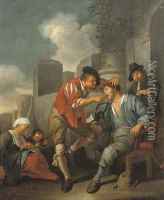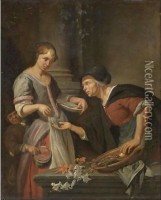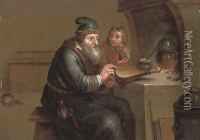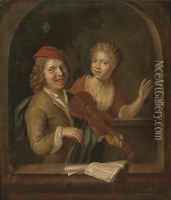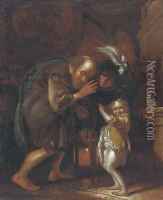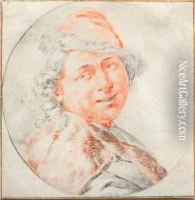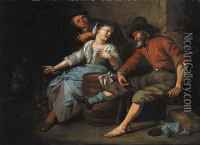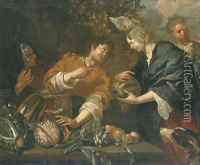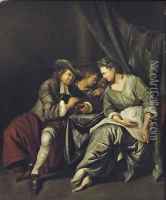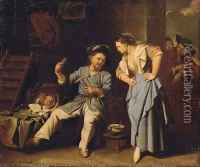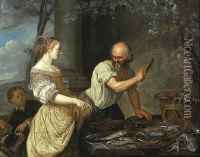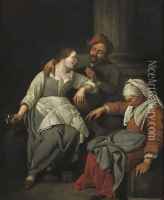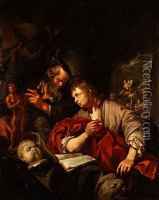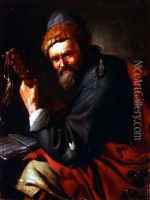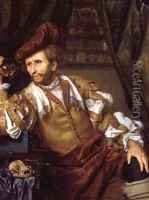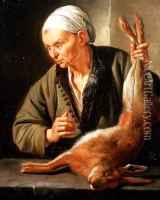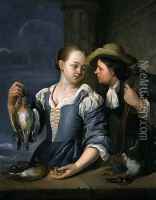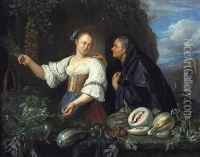Jacob Toorenvliet Paintings
Jacob Toorenvliet was a Dutch Golden Age painter born in Leiden, Netherlands, in 1640. He hailed from an artistic family; his father was the painter Abraham Toorenvliet, who was likely his first teacher. Jacob was known for his skill in painting genre scenes, portraits, and occasionally, history paintings. His works often depicted everyday life with an acute attention to detail and a fondness for capturing the nuances of light and shadow, which was characteristic of Dutch painting at the time.
Toorenvliet showed an early talent for art and became a member of the Leiden Guild of St. Luke at a young age. This guild was an association of painters and other artists, and membership was important for any artist wishing to work professionally. His membership in the guild helped him to establish connections with other artists and patrons.
In the 1660s, Toorenvliet traveled to Italy, which was a common practice among Dutch artists of the period who wished to study the works of the Renaissance masters and the contemporary Italian artists. His time in Italy had a significant impact on his style, as he incorporated Italianate elements into his work, which can be seen in his use of warmer colors and the depiction of Italianate figures and costumes in his genre scenes.
Upon returning to the Netherlands, Toorenvliet settled in Amsterdam for a period, where he continued to work and develop his craft. Later in his career, he returned to Leiden, where he spent the remainder of his life. His paintings were well-regarded, and he received commissions from patrons across Europe. Despite his success, he did not leave behind a large body of work, and today his paintings are prized by collectors and museums for their rarity and quality.
Jacob Toorenvliet passed away in Oegstgeest, near Leiden, in 1719. His legacy lives on through his contributions to the Dutch Golden Age of painting, and his works offer a window into the society and culture of the 17th-century Netherlands.
